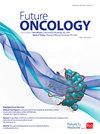Treatment of the blood cancer polycythemia vera with ruxolitinib in the MAJIC-PV study: a plain language summary.
IF 3
4区 医学
Q2 ONCOLOGY
引用次数: 0
Abstract
[Figure: see text].
MAJIC-PV研究中用Ruxolitinib治疗血癌多发性红细胞症:通俗易懂的摘要。
这是一篇文章的摘要,介绍了 MAJIC-PV 研究的主要结果。这项研究探讨了使用抗癌药物鲁索利替尼治疗一种名为 "多发性红细胞增多症 "的血癌。多发性红细胞症患者体内的红细胞过多。研究人员想知道,与现有的最佳疗法相比,Ruxolitinib 的疗效如何,以治疗有可能导致心脏病发作或中风的血栓形成风险的红细胞增多症患者。具体来说,这项研究的对象是已经服用过化疗药物羟基卡巴酰胺(又称羟基脲)治疗红细胞增多症的患者,但这种药物对他们不起作用,或者给他们带来了无法忍受的副作用:在这项研究中,研究人员将 180 名患有多血细胞增多症的成人患者分为两组,其中 93 人每天服用两次 ruxolitinib,87 人服用现有的最佳疗法。43%服用ruxolitinib的患者和26%接受最佳疗法的患者在治疗1年内血细胞计数和脾脏大小正常。84%的服用鲁索利替尼者和75%的接受最佳疗法者至少存活了3年,其多血细胞瘤没有发展成更晚期的血癌。最常见的副作用是消化系统(胃和肠道)疾病、血管疾病和感染。结果说明了什么?与采用现有最佳疗法治疗多发性红细胞增多症的患者相比,服用 Ruxolitinib 的患者更有可能在治疗后 1 年内血细胞计数和脾脏大小恢复正常,并且更有可能在多发性红细胞增多症未发展为更晚期血癌的情况下延长寿命。
本文章由计算机程序翻译,如有差异,请以英文原文为准。
求助全文
约1分钟内获得全文
求助全文
来源期刊

Future oncology
ONCOLOGY-
CiteScore
5.40
自引率
3.00%
发文量
335
审稿时长
4-8 weeks
期刊介绍:
Future Oncology (ISSN 1479-6694) provides a forum for a new era of cancer care. The journal focuses on the most important advances and highlights their relevance in the clinical setting. Furthermore, Future Oncology delivers essential information in concise, at-a-glance article formats - vital in delivering information to an increasingly time-constrained community.
The journal takes a forward-looking stance toward the scientific and clinical issues, together with the economic and policy issues that confront us in this new era of cancer care. The journal includes literature awareness such as the latest developments in radiotherapy and immunotherapy, concise commentary and analysis, and full review articles all of which provide key findings, translational to the clinical setting.
 求助内容:
求助内容: 应助结果提醒方式:
应助结果提醒方式:


